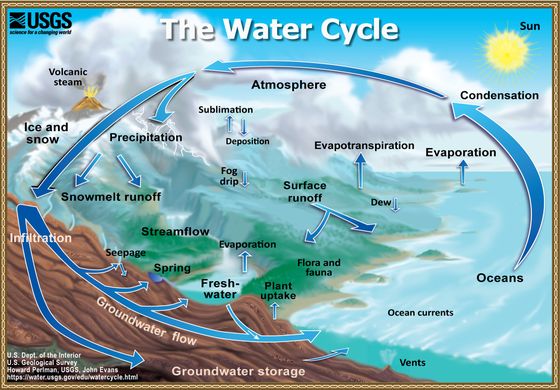uncover
Watersheds
What's a Watershed?

A watershed is the area of land where all of the water that drains off of it goes into the same place—a river, stream, or lake. The smallest watersheds are the drainage areas for small streams and lakes. Think about your closest waterway. Where does the water come from? What type of landscape does it flow through? Where does it end up? All of the area covered is a watershed.
Each small watershed is part of the more extensive watershed for a larger stream or lake in the vicinity. These larger watersheds are, in turn, part of even larger drainage networks, and so on.
Source: MN Pollution Control Agency
Why are watersheds important?
Imagine watersheds like bathtubs. Any drop of water that falls within the bounds of that bathtub reaches the drain. But not just water gets washed down the drain - anything that ends up in that drainage basin also washes down with the water. The same is true with watersheds. Anything that falls on the ground in a watershed has the potential to run off into the body of water - stream, river, or lake - that drains that particular watershed.
Knowing what land area drains into what body of water, and knowing what is happening on that land, helps us understand what types of substances might be washing into the water. For example, what runs off a predominantly agricultural landscape is different than what runs off an urban landscape.


We All Live in a Watershed
Each one of us lives in a watershed, and our actions and behaviors affect the health of that watershed. But it's not just humans that live in and rely on healthy watersheds. We share these ecosystems with many other living things that depend on clean water and functioning water systems.
In this Quest, we're going to be focusing on a few groups of animals that rely on healthy watersheds in Minnesota. Let's meet them.

The Water Cycle
Earth's water is always in movement, and the natural water cycle, also known as the hydrologic cycle, describes the continuous movement of water on, above, and below the surface of the Earth. Water is always changing states between solid, liquid, and gas, with these processes happening in the blink of an eye and over millions of years.
As a CYCLE, there isn't a beginning or end to the water cycle, but rather there are a series of processes that occur to circulate water through our planet's systems. To really become a hero for water and watersheds, it helps to understand the big picture of how water moves through our world.